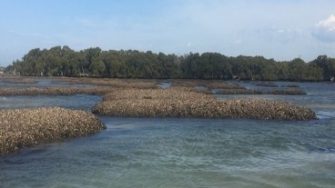
Synopsis
In Australia, and globally, extraction through overfishing and pollution has decimated >95% of oyster reefs. These aren’t the small clumps of oysters we see on rocks but large reefs akin to coral reefs in tropical ecosystems. Thus there is massive efforts globally, including locally in NSW, to restore these reefs. The Federal government recently announced a $20 M restoration package of oyster reefs and researchers in my lab work closely with government agencies and conservation groups that will restore those reefs. We are currently conducting large scales experiments to determine where to restore reefs. But fundamental knowledge about how big to build them to restore the functions they provide, in critical, but missing.
Aims
At UNSW, my lab uses fundamental ecology to in improve outcomes for restoration practices. Here, this project will use remanent reefs in NSW to inform restoration strategies, by determining how the size of reefs influences the ecosystem functions (e.g. biodiversity, water clarity) they provide. Various projects are available to investigate the relationships between reef size.
- Associated fish communities.
- Prevalence of important diseases and parasites.
- Invertebrate biodiversity on reefs.
Student benefits
You’ll benefit from working within UNSW Biological, Earth and Environmental Sciences which houses one of the largest and most diverse collective of temperate ecologists in Australia. You will work side-by-side with environmental managers and international conservation groups (e.g. the Nature Conservancy), developing your ecological research skills and quantitative analytical skills.
Fieldwork will be conducted in the Hawksbury-Nepean region which is home to several estuaries containing remnant reefs.
Supervisors: A/Prof. Paul Gribben
Get involved
To learn more about this project, contact A/Prof Paul Gribben.
